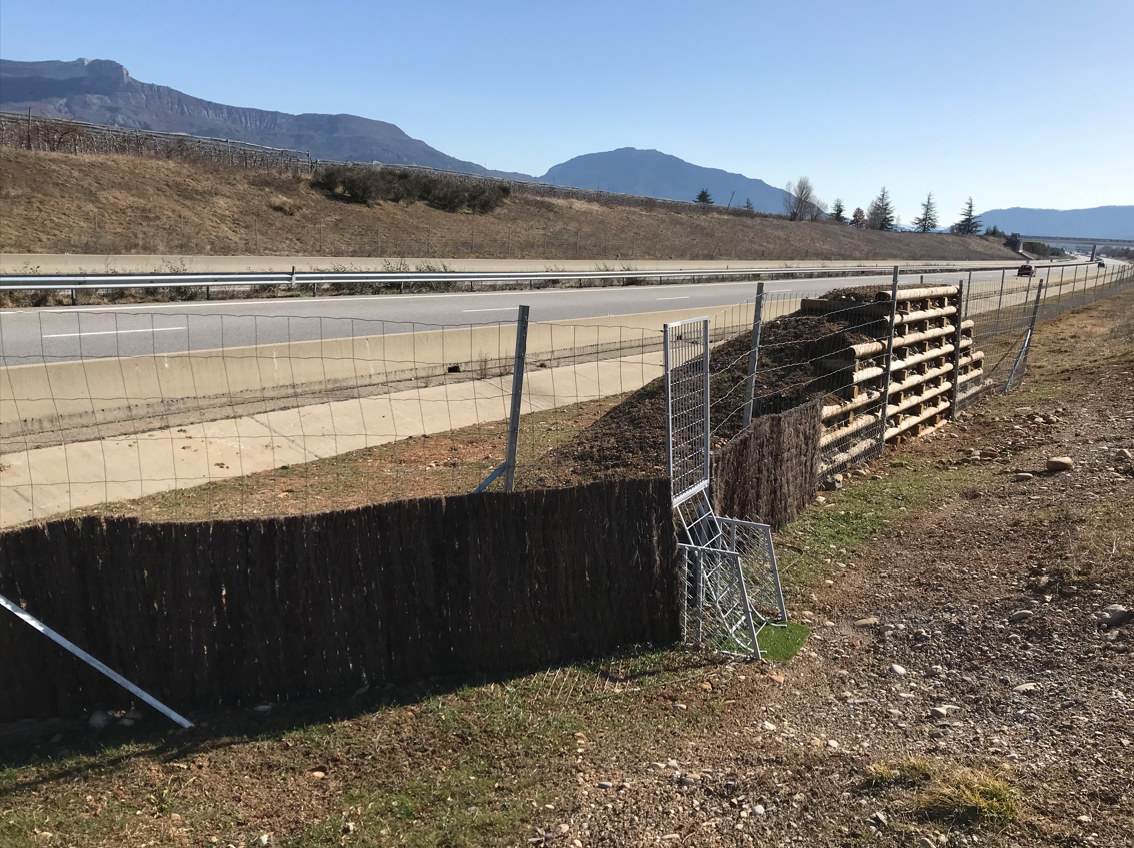Submitted by editor on 19 April 2024. Get the paper!
Get the paper!
Photo 1. Photo by Caryl Buton. Trapdoors (in the front) or ramps (in the rear) and other escape devices are used to allow wild ungulates to exit fenced motorway or railway rights of way.
By Caryl Buton, Nicolas Kaldonski, François Nowicki and Christine Saint-Andrieux
The perimeter fencing of man-made structures is now standard practice in construction projects. The primary objective of such fencing is to ensure the safety of users and the integrity of facilities and equipment. Depending on the specifications of the project, these fences are used to deter both human and animal access. But regardless of the purpose, wildlife often bears the brunt of these barriers. It’s vital to maintain the natural movement of species and minimize ecological disruption to preserve biodiversity. That’s why it’s essential to strike a balance between creating effective barriers for wildlife and implementing strategies to reduce biodiversity loss.
From 2020 to 2023, we carried out simultaneously two intensive reviews to explore the practices and literature on various types of fencing in France. The first review focused on escape devices placed along fenced transport infrastructures to facilitate wild ungulates to exit the right of ways.
In our article, we compare the gaps and needs identified in both studies and present a set of Research Priorities aimed at improving our understanding of the ecological effects of fences and evaluating the effectiveness of exclusion fences and additional equipment (escape devices, small fauna passages at the base of fence, etc.). We also provide Methodological Recommendations to improve scientific research and monitoring protocols for different fence types, contexts and regulatory requirements.

Photo 2. Photo by Caryl Buton. The drafting of a guide on the exclusion fences around photovoltaic power plants included an in-depth analysis of research about ecological impacts of fences and prevention practices.
Given the significant expansion of fences, we advocate the integration of these recommendations at every stage of development work, from initial planning through the monitoring phase. Considering the cumulative effects of habitat fragmentation, we emphasize the need for environmental assessments that go beyond the boundaries of individual project We also argue that addressing concerns about fencing requires the establishment of a governance body commensurate with the scale of the areas involved.

Photo 3. Photo by Caryl Buton. Cumulative impacts of fencing are to be studied and managed in the very close surroundings of any fenced facility, as well as in an integrated way on a much wider territorial scale that exceeds the simple framework of a single project.
Categories:

